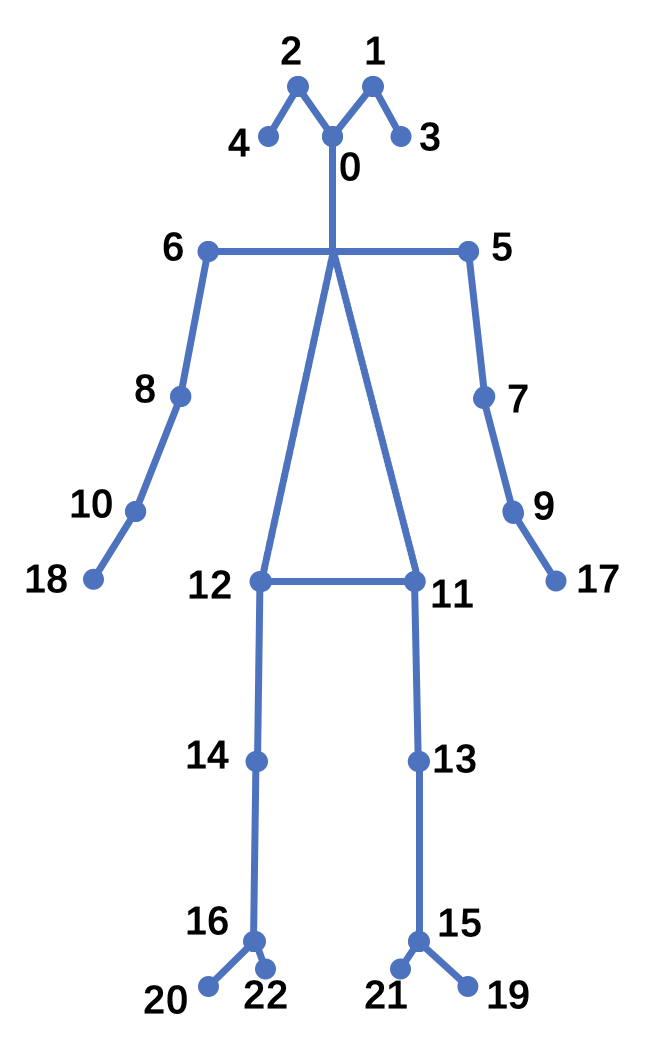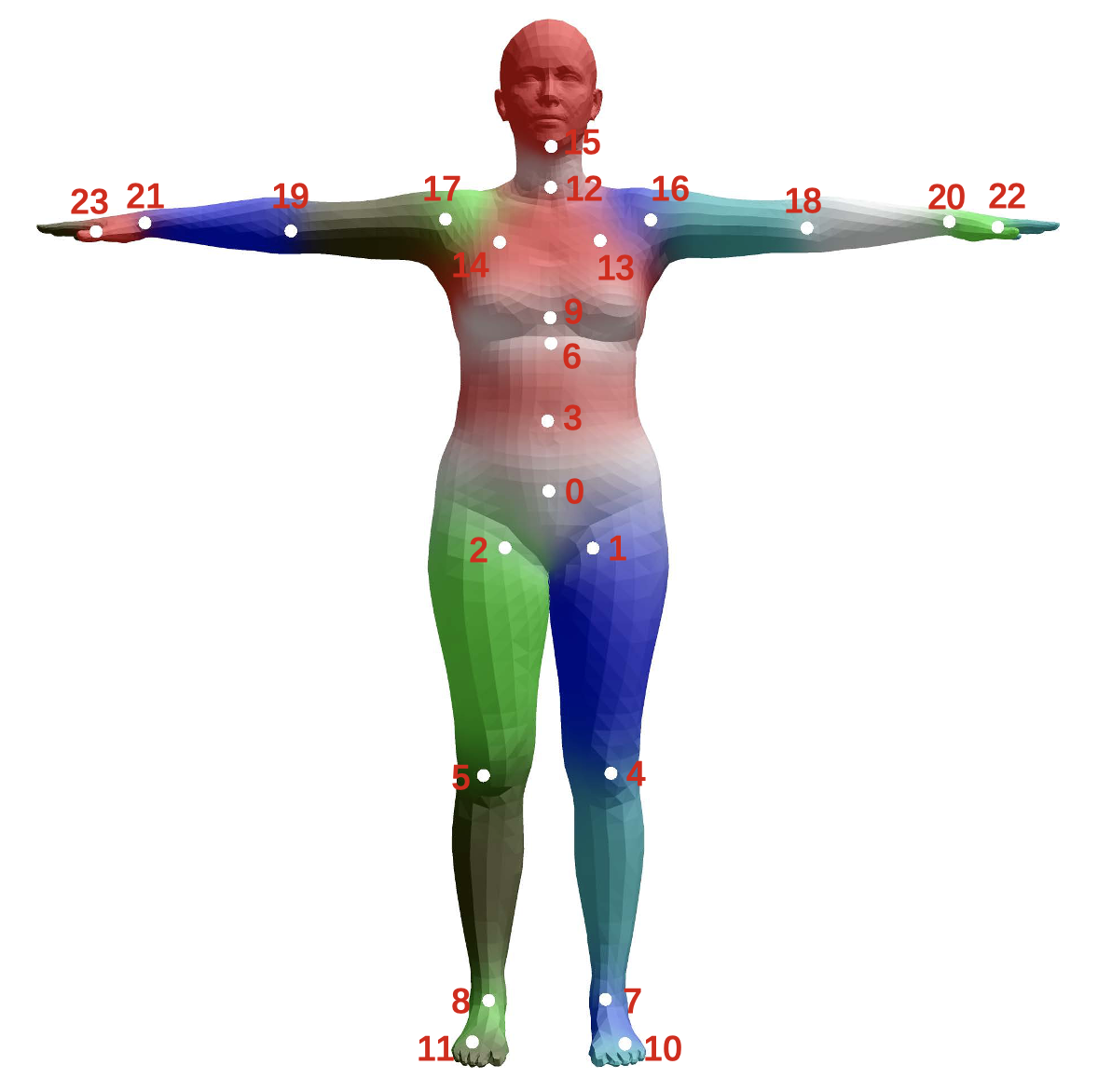# Body检测
VisionKit从基础库 2.28.0版本开始提供body检测能力。从 微信>=8.1.0 版本开始提供人体3D关键点检测,作为Body检测的扩展能力接口。
# 方法定义
body检测有2种使用方法,一种是输入一张静态图片进行检测,另一种是通过摄像头实时检测。
# 1. 静态图片检测
通过 VKSession.detectBody 接口 输入一张图像,算法检测到图像中的人体,然后通过 VKSession.on 接口 输出获取的人体关键点信息。
示例代码:
const session = wx.createVKSession({
track: {
body: { mode: 2 } // mode: 1 - 使用摄像头;2 - 手动传入图像
},
})
// 静态图片检测模式下,每调一次 detectBody 接口就会触发一次 updateAnchors 事件
session.on('updateAnchors', anchors => {
this.setData({
anchor2DList: anchors.map(anchor => {
points: anchor.points, // 关键点坐标
origin: anchor.origin, // 识别框起始点坐标
size: anchor.size // 识别框的大小
}),
})
})
// 需要调用一次 start 以启动
session.start(errno => {
if (errno) {
// 如果失败,将返回 errno
} else {
// 否则,返回null,表示成功
session.detectBody({
frameBuffer, // 图片 ArrayBuffer 数据。待检测图像的像素点数据,每四项表示一个像素点的 RGBA
width, // 图像宽度
height, // 图像高度
scoreThreshold: 0.5, // 评分阈值
sourceType: 1 //图片来源, 默认为1, 0表示输入图片来自于视频的连续帧
})
}
})
# 2. 通过摄像头实时检测
算法实时检测相机中的人体姿态,通过 VKSession.on 接口 实时输出检测到的人体关键点。
示例代码:
const session = wx.createVKSession({
track: {
body: { mode: 1 } // mode: 1 - 使用摄像头;2 - 手动传入图像
},
})
// 摄像头实时检测模式下,监测到人体时,updateAnchors 事件会连续触发 (每帧触发一次)
session.on('updateAnchors', anchors => {
this.data.anchor2DList = []
this.data.anchor2DList = this.data.anchor2DList.concat(anchors.map(anchor => {
points: anchor.points,
origin: anchor.origin,
size: anchor.size
}))
})
// 当人体从相机中离开时,会触发 removeAnchors 事件
session.on('removeAnchors', () => {
console.log('removeAnchors')
})
// 需要调用一次 start 以启动
session.start(errno => {
if (errno) {
// 如果失败,将返回 errno
} else {
// 否则,返回null,表示成功
}
})
# 3. 开启3D关键点检测
想要开启人体3D关键点检测能力,静态图片模式仅需要在2D调用基础上增加open3d字段,如下
// 静态图片模式调用
session.detectBody({
..., // 同2D调用参数
open3d: true, // 开启人体3D关键点检测能力,默认为false
})
摄像头实时模式则在2D调用基础上增加3D开关更新函数,如下
// 摄像头实时模式调用
session.on('updateAnchors', anchors => {
this.session.update3DMode({open3d: true}) // 开启人体3D关键点检测能力,默认为false
..., // 同2D调用参数
})
# 输出说明
# 点位说明
人体2D关键点为23点定义,如下图所示。

人体3D关键点为SMPL-24点关节定义,如下图所示。

# 人体检测
人体检测输出字段包括
struct anchor
{
points, // 人体2D关键点在图像中的(x,y)坐标
origin, // 人体检测框的左上角(x,y)坐标
size, // 人体检测框的宽和高(w,h)
score, // 人体检测框的置信度
confidence // 人体关键点的置信度
}
# 人体3D关键点
开启人体3D关键点检测能力后,可以获取人体2D及3D关键点信息,其中人体3D关键点输出字段包括
struct anchor
{
..., // 人体检测2D输出信息
points3d, // 人体3D关键点的(x,y,z)3D坐标
camExtArray, // 相机外参矩阵,定义为[R, T \\ 0^3 , 1], 使用相机内外参矩阵可将3D点位投影回图像
camIntArray // 相机内参矩阵,参考glm::perspective(fov, width / height, near, far);
}
# 应用场景示例
- 人像抠图。
- 越界检测。
- 人群流量统计。